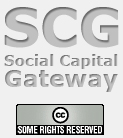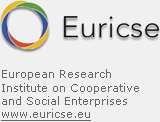The Institute for Scientific Information (ISI) was founded by Eugene Garfield in 1960. It was acquired by Thomson Scientific & Healthcare in 1992, became known as Thomson ISI and now is part of the Healthcare & Science business of the multi-billion dollar Thomson Reuters Corporation.
ISI offered bibliographic database services. Its specialty: citation indexing and analysis, a field pioneered by Garfield. It maintains citation databases covering thousands of academic journals, including a continuation of its longtime print-based indexing service the Science Citation Index (SCI), as well as the Social Sciences Citation Index (SSCI), and the Arts and Humanities Citation Index (AHCI). All of these are available via ISI's Web of Knowledge database service. This database allows a researcher to identify which articles have been cited most frequently, and who has cited them.
The ISI also publishes the annual Journal Citation Reports which list an impact factor for each of the journals that it tracks. Within the scientific community, journal impact factors play a large but controversial role in determining the kudos attached to a scientist's published research record.
A list of over 14,000 journals is maintained by the ISI. The list includes over 1100 arts and humanities journals as well as scientific journals. Listing is based on published selection criteria and is an important indicator of journal quality and impact.
The ISI also publishes a list of highly cited researchers, one of the factors included in the Academic Ranking of World Universities published by Shanghai Jiao Tong University.
ISI publishes Science Watch, a newsletter which identifies every two months one paper published in the previous two years as a "fast breaking paper" in each of 22 broad fields of science, such as Mathematics (including Statistics), Engineering, Biology, Chemistry, and Physics. The designations are based on the number of citations and the largest increase from one bimonthly update to the next. Articles about the papers often include comments by the authors.
Note: information taken from Wikipedia.








